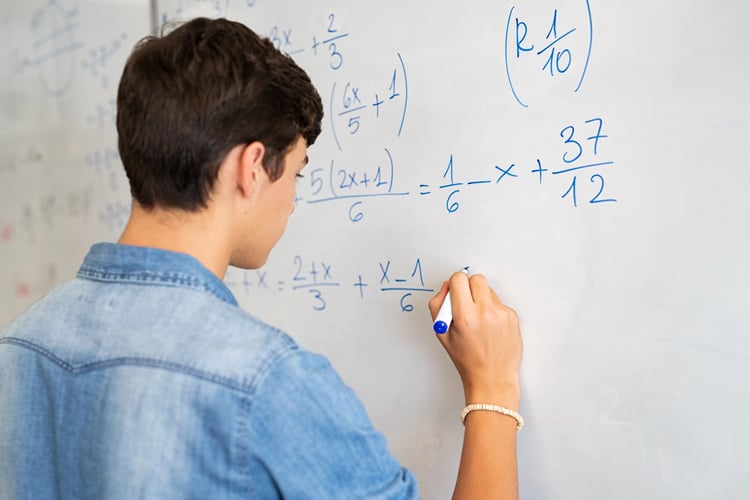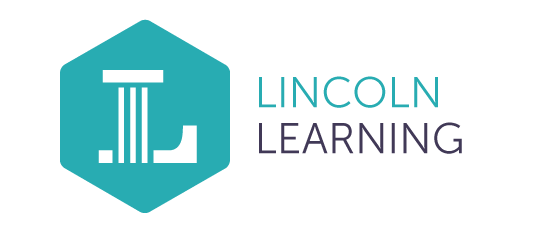Regain Progress
Our Credit Recovery courses provide students the opportunity to recover credits while building their own pathways of learning. Each Credit Recovery courses allows students may test out of content they have mastered and spend more time on the content they need to revisit.

Grades 9-12
-
English Language ArtsAmerican LiteratureBritish Literature
American Literature
This is the credit recovery version of the American Literature Course. In American Literature, students explore various cultural periods of American literature. They examine numerous aspects of Romanticism, literature from multiple historical eras of the United States, and contributions made by significant American leaders. In addition to discovering multiple genres and investigating numerous periods of writing, students also explore the basics of literature, writing, and grammar.
English Language Arts 9British Literature
This is the credit recovery version of British Literature. British Literature provides students with a survey of literature in this genre. Students explore the Anglo-Saxon and medieval eras, the English Renaissance, and the Restoration and Enlightenment periods. They analyze how authors from this region have traditionally constructed texts and developed prominent and long-lasting literature. In this course, students examine a variety of styles and use the vocabulary that is characteristic of literature pieces they are reading. This course offers students numerous chances to discuss, analyze, synthesize, and evaluate the texts they read through a wide range of writing and thinking exercises.
English Language arts 10English Language Arts 9
This is the credit recovery version of the English Language Arts 9 course. English Language Arts 9 utilizes works of fiction and nonfiction from classic to modern times to introduce students to key literary elements. Students develop skills in literary analysis and interpretation by reading and examining plot, setting, character, narrator, voice, tone, mood, symbolism, irony, and other literary elements. In addition, students examine form, style, and persuasion in nonfiction works. In this course, students strengthen their vocabulary, grammar skills, and use of mechanics. They also focus on mastering the stages of the writing process and further developing their research and presentation skills.
Short StoriesEnglish Language Arts 10
This is the credit recovery version of English Language Arts 10. In English Language Arts 10, students focus on literature, grammar, and composition. They examine words and their meanings and apply this information to other concepts in the course. Students analyze the different elements of a story, including plot, setting, character, narrator, and voice. Additionally, throughout the course, students study various parts of speech, readings, and poetry. English Language Arts 10 also presents students with many different types and styles of writing in order to provide a thorough examination of language and literature. Students apply these styles to their own writing as well.
Technical WritingShort Stories
This is the credit recovery version of Short Stories. Short Stories exposes students to the basic characteristics, writing style, and literary elements of a story. From characters, point of view, and setting to techniques such as suspense and irony, students learn how short stories provide readers with the opportunity to experience different storylines in a precise and defined format. Students become acquainted with the compact nature of the short story literary form and each author’s ability to weave exciting, interesting narratives in such short, tight spaces. Students learn the importance of being concise, recognizing that good literature does not necessarily have to be lengthy in order to be captivating.
Technical Writing
This is the credit recovery version of Technical Writing. Written communication skills and documentation in the business environment are central to the Technical Writing course. This course enables students to understand a variety of documents and allows them to perfect their technical writing abilities. From journal writing, email, and directional writing to memos and letter drafting, students encounter numerous types of technical writing and build upon their technical skills and knowledge.
-
MathematicsPre-AlgebraAlgebra I
Pre-Algebra
This is the credit recovery version of Pre-Algebra. In Pre-Algebra, students explore concepts such as integers, expressions, equations, and fractions. This course provides students with a solid foundation for Algebra I and emphasizes the use of technology, problem solving, critical thinking, and reasoning.
Algebra IIAlgebra I
This is the credit recovery version of Algebra I. In Algebra I, students explore roots, function patterns, graphs, equations, and inequalities. They will also transform and compare functions. Students will describe and translate graphic, algebraic, numeric, and verbal representations of relations and use those relationships to solve problems. Students will develop computational, procedural, and problem solving skills throughout this course, building a solid foundation for further studies in mathematics.
Applied MathematicsAlgebra II
This is the credit recovery version of Algebra II. In Algebra II, students analyze situations verbally, numerically, graphically, and symbolically. Students solve equations and inequalities. They extend their knowledge of algebraic expressions, absolute value, functions, and graphs. This course prepares students for more difficult mathematical concepts and content.
Business MathematicsApplied Mathematics
This is the credit recovery version of Applied Mathematics. Applied Mathematics covers the fundamental mathematics necessary for students to obtain a broad range of skills. Although problems in this course apply to a variety of topics from Algebra to Geometry, emphasis is given to real-world applications. Students write and solve linear equations to represent situations such as the value of a car or the distance that a plane travels during a trip. They also learn to solve quadratic equations and find the maximum value of quadratic equations. Students explore area, perimeter, and volume, and then they apply these concepts to situations such as building a swimming pool. Students calculate conversions between the U.S. customary system of measurements and the metric system. Geometry concepts presented in this course include the Pythagorean Theorem, using similar triangles, finding dimensions, and interpreting scale on a map. Finally, students use statistical concepts to interpret data sets and turn those data sets into graphical representations.
Consumer MathematicsBusiness Mathematics
This is the credit recovery version of the Business Mathematics course. Business Management guides students through examples of their roles as wage earners, consumers, and citizens as they explore the wide, exciting world of business. Students examine topics ranging from extensive credit use to the role of government in the U.S. economy. Students are encouraged to take Introduction to Business as a prerequisite to this course, as Business Management dives deeper into the different aspects of managing a business successfully.
GeometryConsumer Mathematics
This is the credit recovery version of Consumer Mathematics. In Consumer Mathematics, students learn mathematical concepts that they will use in their daily lives. They focus on real-world topics that require addition, subtraction, multiplication, and division of whole numbers, as well as fractions, decimals, ratios, proportions, and percentages. Students also explore the ways in which real-life activities such as traveling, purchasing a new car or house, or even installing new carpeting relates to mathematics. Consumer Mathematics relates everyday mathematics concepts to concrete definitions, processes, and many real-life situations.
Pre-CalculusGeometry
This is the credit recovery version of Geometry. In Geometry, students explore the relationships that exist within geometric figures, such as triangles, circles, and quadrilaterals. Students analyze the relationships and use mathematical postulates and theorems to write proofs. The explored relationships are also used to solve mathematical and real-world problems and to perform geometric constructions. The students are introduced to the concept of probability and to parabolas.
CalculusPre-Calculus
This is the credit recovery version of Pre-Calculus. In Pre-Calculus, students develop a deeper and more thorough understanding of functions and graphs. Graphs that students study range from polynomial and rational to exponential, logarithmic, and trigonometric. Some exponential and logarithmic topics discussed in this course are change of base formulas, properties of logs, growth and decay, and logistic growth models.
Calculus
This is the credit recovery version of Calculus. Calculus evaluates higher-level mathematics through analytical/algebraic, numerical, graphical, and verbal methods. Students study various components of mathematics, including the investigation of trigonometric functions, probability, and series. Students will strengthen their skills with Pre-Calculus and Trigonometry concepts in preparation for post-secondary coursework. Having a strong calculus knowledge base supports all students, but mostly those students who are interested in careers in the mathematics and engineering fields.
-
ScienceAstronomyBiology
Astronomy
This is the credit recovery version of Astronomy. In Astronomy, students begin by discussing basic astronomical concepts and discoveries throughout history. They take an in-depth look at the first moments of the universe by studying the Big Bang. From there, they investigate the evolution of the universe, beginning with the first atoms and moving on to explore elements, stars, solar systems, and galaxies. Students gather information to determine if there is a possibility of life on other planets and in other solar systems. Students analyze the major space missions that have led to the modern study of cosmology, and they explore the possibilities of where this field may take scientists in the future.
ChemistryBiology
This is the credit recovery version of Biology. Biology covers a wide range of concepts in the field of biology. They are introduced to the concept of cell structure and function, and investigate Mendelian genetics and how humans inherit traits. Students also analyze the structure and mechanisms of DNA, as well as the role of biotechnology in today’s society. This course presents the theory of evolution, including early ideas, how populations evolve, and the history of life on Earth. Students explore the concept of ecology, where they study the different principles of ecology, interactions that occur within ecosystems, the biosphere, and the ways in which humans have impacted ecosystems.
Earth ScienceChemistry
This is the credit recovery version of Chemistry. Chemistry takes students on a journey beginning with an exploration of scientific practices, laboratory safety guidelines, and measurement skills. Next, students work through the properties of matter, atomic theory and structure, and quantum mechanics. The history and organization of the periodic table precedes exploring the basics of chemical bonding, rules for naming compounds, proper construction of chemical formulas, and methods of chemical quantification. Semester one concludes by investigating the types of chemical reactions and balancing chemical equations. During semester two, students begin with conducting stoichiometric calculations, studying the behavior of gases, and investigating the nature of solutions. Next, the world of thermochemistry is explored, as well as the concept of equilibrium. Students continue into an investigation of acids, bases, and salts and the concept of oxidation-reduction reactions. The course culminates with a look at specialty areas of chemistry, including nuclear chemistry, organic chemistry, biochemistry, and electrochemistry. As a prerequisite to Chemistry, students must have completed Algebra I with a passing grade of C or better.
Environmental ScienceEarth Science
This is the credit recovery version of Earth Science. In Earth Science, students discover the theories about how Earth first formed. They explore Earth’s history and the different geologic processes that continually take effect and help to shape the planet. Students debate the ways in which human impacts affect the Earth's climate, and they view Earth as a body within the solar system and universe. They also review Earth's renewable and finite resources. The course concludes with a virtual tour of Earth's atmosphere and oceans.
Fundamentals of EcologyEnvironmental Science
This is the credit recovery version of the Environmental Science Course. Environmental Science introduces students to the scientific method, terrestrial and aquatic ecosystems, biomes of the world, trophic interactions, and nutrient and chemical cycles. Students analyze the human impact on the environment and ways to reduce negative consequences. Students also investigate environmental issues first hand and use their discoveries to make environmental decisions for themselves.
Physical ScienceFundamentals of Ecology
This is the credit recovery version of Fundamentals of Ecology. Fundamentals of Ecology allows students to explore the ways in which organisms interact with their surrounding environments. Students will investigate ecological principles, such as natural selection, population and population dynamics, biodiversity, and the sustainability of ecosystems. Students also analyze major ecological challenges and the different ways society is working to mitigate these challenges.
PhysicsPhysical Science
This is the credit recovery version of Physical Science. In Physical Science, students are introduced to the principles of chemistry and physics so that they may develop a better understanding of atoms, chemical reactions, and nuclear interactions. Students explore the properties and states of matter and investigate chemical bonds and reactions. Students will investigate the development of the periodic table, an outline of modern atomic theory, and organic and nuclear chemistry. Additionally, students study Newton’s laws of motion while considering the interactions between motion, forces, energy, and thermodynamics. As a prerequisite to Physical Science, students must have completed Algebra I.
Physics
This is the credit recovery version of Physics. Students enrolled in Physics advance their knowledge and understanding of concepts in previous general science courses. In this course, students examine classical mechanics while learning to calculate concepts in one-dimensional, two-dimensional, and circular motion. Students explore work and energy in addition to the concepts of waves, sound, light, optics, and electromagnetism. The course concludes with an analysis of nuclear physics and a debate on quantum physics. This course requires students to use fundamental algebra and analytical skills to solve problems and analyze situations. As a prerequisite to Physics, students must have completed Algebra I. While the completion of Trigonometry is not required, a pre- or corequisite of Trigonometry will allow students to be better prepared for calculations involving dynamics, vectors, and kinematics.
-
Social Studies1960s AmericaCivics and Government
1960s America
This is the credit recovery version of 1960s America. The 1960s America course gives students a look at life during this exciting and monumental decade. This course covers the social, political, and cultural movements and changes that occurred in the 1960s. Students explore different historical events and determine how these events impacted American citizens during the decade and afterward. The course also focuses on significant headlines of the 1960s to give students a realistic perspective of this decade.
EconomicsCivics and Government
Civics and Government offers students an introduction to the foundation of the democratic government of the U.S. and the basic principles of the judicial system. In this course, students explore what it means to be a citizen, as well as the structure of the legislative, executive, and judicial branches of the U.S. government. Students learn about how these branches work together. Students also look at the characteristics of state and local governments throughout the country to examine the organization and responsibilities of these branches. Students also explore the components of the American economy, including its foundations and how it interacts with other economies of the world.
U.S. History IEconomics
Economics presents an overview of microeconomics and macroeconomics. It discusses economic theories, economic systems, various economic concepts, and the global economy. Students will examine the economy of the United States in depth and compare it to other economies. Students will also explore personal banking and how to prepare for their financial future.
U.S. History IIU.S. History I
This is the credit recovery version of U.S. History I. U.S. History I introduces students to early United States history and covers topics ranging from the first inhabitants of the North American continent through the end of the American Civil War. Students examine the growth of the United States, including major events that led to the American Revolution; post-Revolutionary War growth; the political, economic, and social landscape in the early 1800s; slavery; and territorial expansion. Students explore concept of Manifest Destiny and the Civil War, leading to an analysis of the state of the nation at the Civil War’s end.
World CulturesU.S. History II
This is the credit recovery version of U.S. History II. In U.S. History II, students will explore United States history from the post-Reconstruction era to the present. This course allows students to investigate the expansion of the United States' economy, government, culture, and foreign policy. Students will analyze cultural movements and influential legislation. The course offers numerous interactivity options for students to dive deeper into key events and concepts in U.S history.
World HistoryWorld Cultures
This is the credit recovery version of World Cultures. World Cultures explains global geography, history, and culture to students. In this course, students study the major political powers of each era and discover how the world's earliest civilizations developed through the Age of Exploration to the Industrial Revolution. In the second half of the course, students examine a world at war, navigating the World War I, nationalist movements in Russia and Asia, World War II, the Cold War, independence from imperial and communist rule, and struggles for democracy. The course closes with discussions of current global issues such as terrorism, technology, economy, pollution, and renewable energy.
World History
This is the credit recovery version of World history. World History allows students to investigate significant events, people, and places from prehistoric to modern times. Studying world history allows students to consider the historical relevance of people, places, and events. In this wide-ranging course, students learn how the world and its inhabitants were shaped over time, and, in the process, gain a better understanding of the role that geography plays in world history.
-
State History ContentPennsylvania History
Pennsylvania History
This is the credit recovery version of Pennsylvania History. In Pennsylvania History, students explore the geography, history, culture, and government of Pennsylvania. They examine Pennsylvania's role in the founding of the United States, the Civil War, and the Industrial Revolution, and they study the state’s significance in modern times.
-
Wellness and NutritionHealth
Health
This is the credit recovery version of Health. In Health, students discover how to make conscientious decisions when attempting to improve their overall health and wellness. From healthy lifestyles, diets, and exercise to responsibilities within individual families and larger communities, topics within the health discipline are pertinent and applicable to all students. Throughout the course, students review concepts that promote safe, healthy, and active lifestyles.

